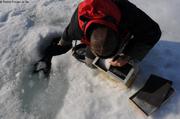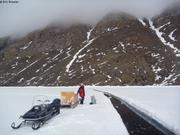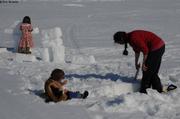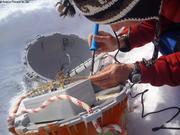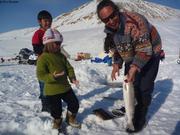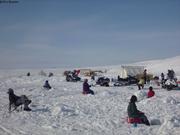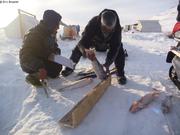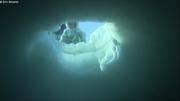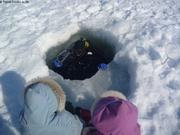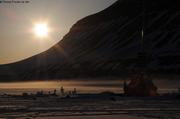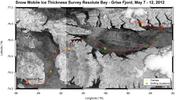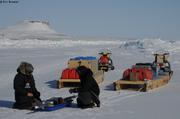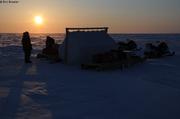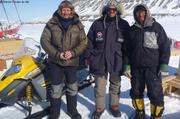Les oies sont de retour
When crossing the fjord with the icemeter, I meet about twenty geese, flying in formation at low altitude. They pass very close and seem watching me, I can see their eyes very well. They are finishing their long migration. Couples, joined for life, are coming here to find again their best nesting place.
On land, flowers start to bloom, beautiful. Rivers have been running for a few days, we don't need to go and get ice anymore to have fresh water. Flies are amusing Aurore and Léonie, who are collecting them!
On board, France finished taking the inventory, she is ordering food for summer, and already for next winter. When fog is clearing, and when sun is warming up, even if the stove is off, temperature can be more than 25°C inside the boat. With thaw, remains of seal fat are appearing, and dogs have to be moved a little bit not to get dirtier. Each one gets a wide plank to lie down dry.
In the fjord, I keep doing hydrographic and ice thickness measurements every three days. The icemeter already did more than 2000km. With thaw, old tracks can be seen, from last November and December. Another track is amazing, from a lost seal: I can follow it for about four kilometers, until I loose it... what happened to this seal?
With the portable sounder, by going from seal to seal, and by plunging every time the sensor inside the hole through which the seal just disappeared, we can get depth data without having to make hole in the ice. Marine charts are not precise here, and it could be interesting to [locate the sill of the fjord. The underwater video, plunged in several holes, shows cloudier and greener water from a few weeks ago.
